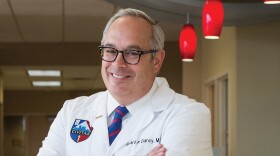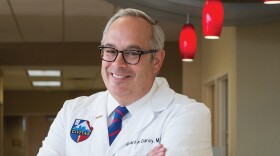On this edition of ST, we are pleased to welcome back to our program Dr. Gerard Clancy, TU's Vice President for Health Affairs and Dean of the Oxley College of Health Sciences. (Dr. Clancy has also been designated as the next President of the University.) He joins us to talk about a newly announced effort aimed at addressing mental illness and substance abuse in the Tulsa area. This effort is tentatively known as the Tulsa Plan; per an article that ran last month in The Tulsa World, it "is being coordinated by TU and includes a leadership council with philanthropy, business, university, state, and nonprofit representation.... White males between the ages of 45 and 54 have seen huge increases in drug overdoses, suicide rates, and chronic liver diseases. Oklahoma ranks second in the nation in percentage of population with mental illness at 22.4 percent, and second in the nation in percent of population with substance abuse problems at 11.9 percent.... [This] state is 50th in the nation in adults who suffer from some form of mental illness, 47th in thoughts of suicide, 43rd in drug and alcohol abuse, and 46th in the nation on spending on mental health...." Dr. Clancy expands on these stats on our program, while also updating us on a similar data-driven effort that he and others began over a decade ago in this community. That 2005 effort was focused on reducing the life-expectancy gap between people in North Tulsa and those in South Tulsa; it resulted in a three-year increase in the expected lifespan of some 20,000 individuals in North Tulsa.
A Conversation with Dr. Gerard Clancy, TU's Vice President for Health Affairs














